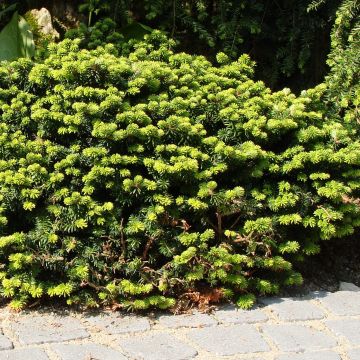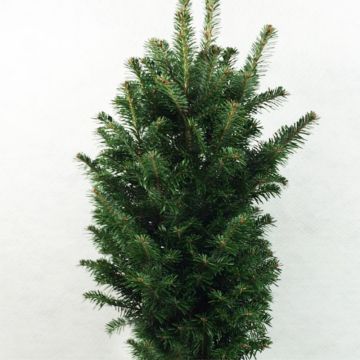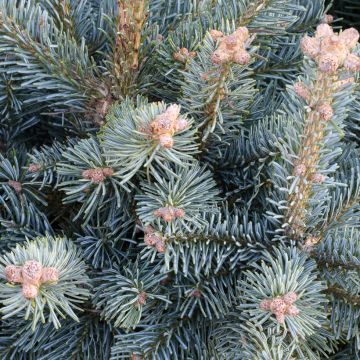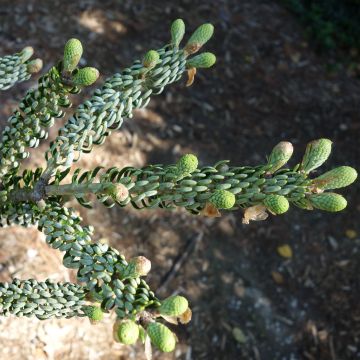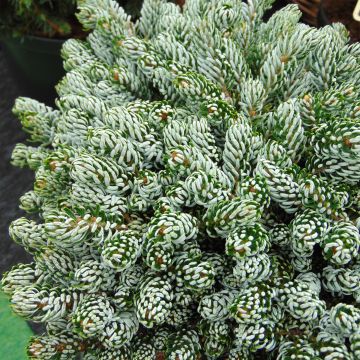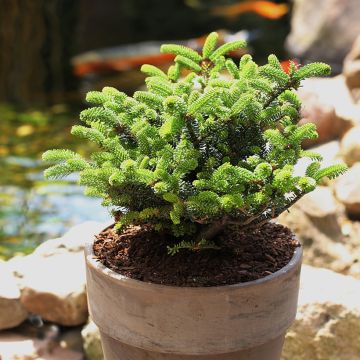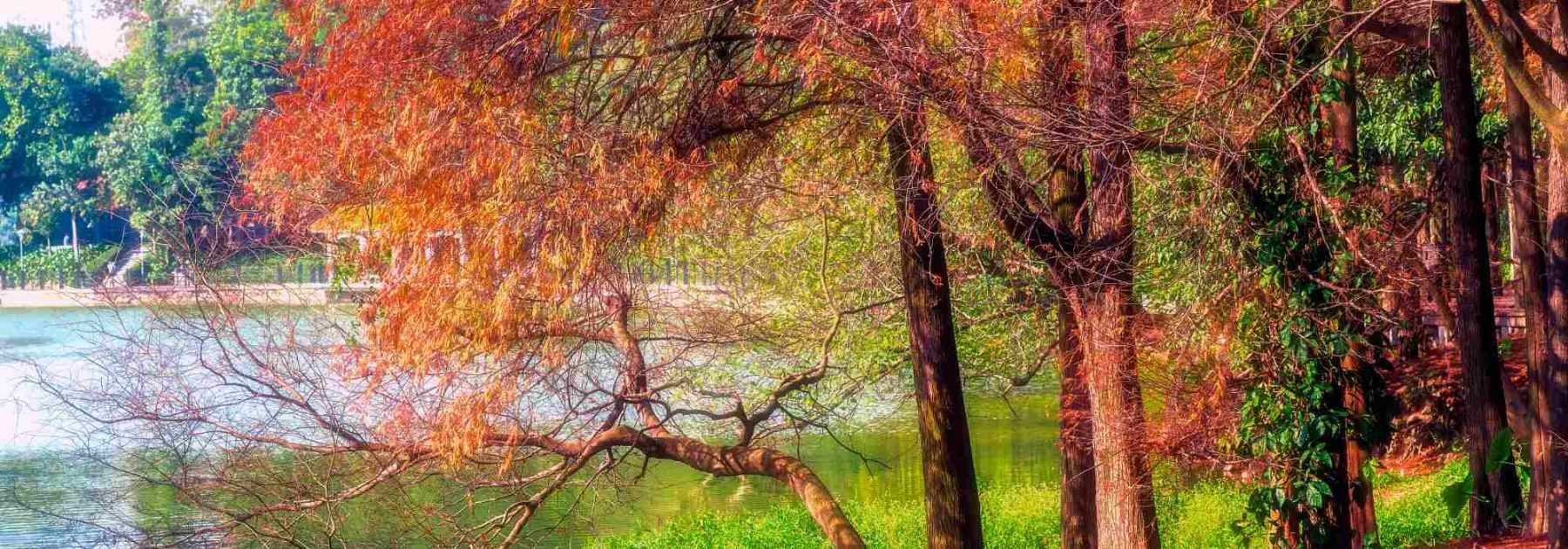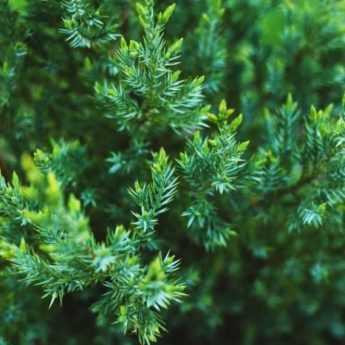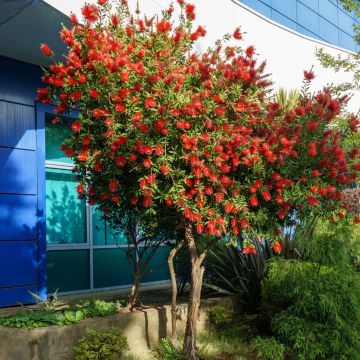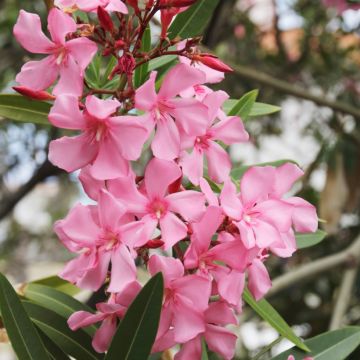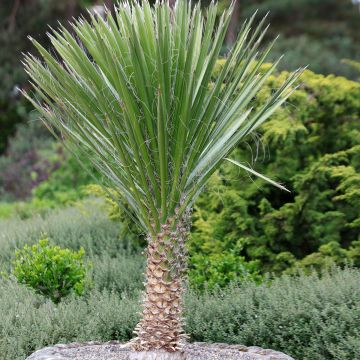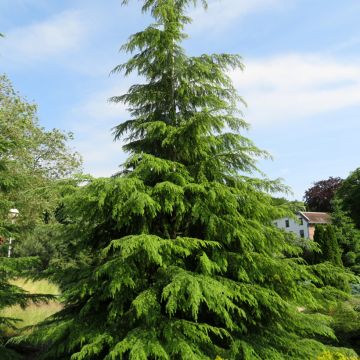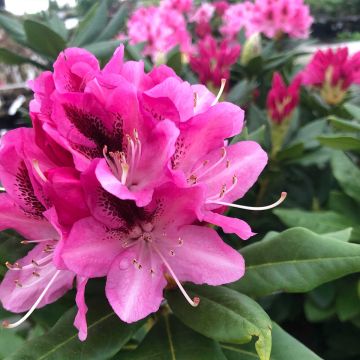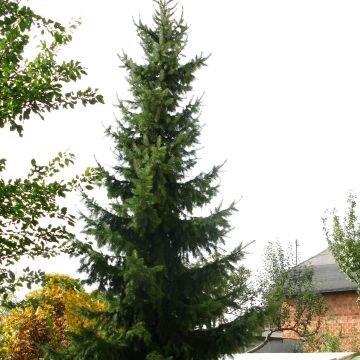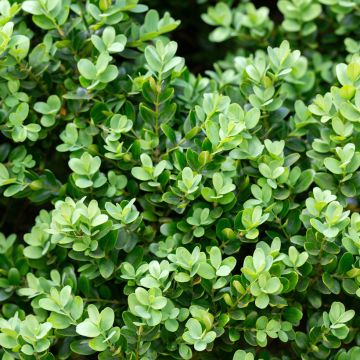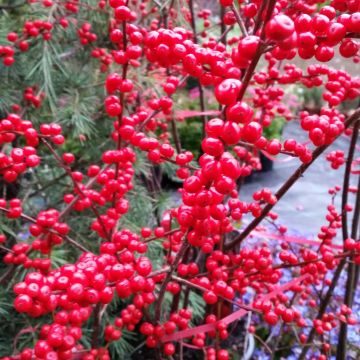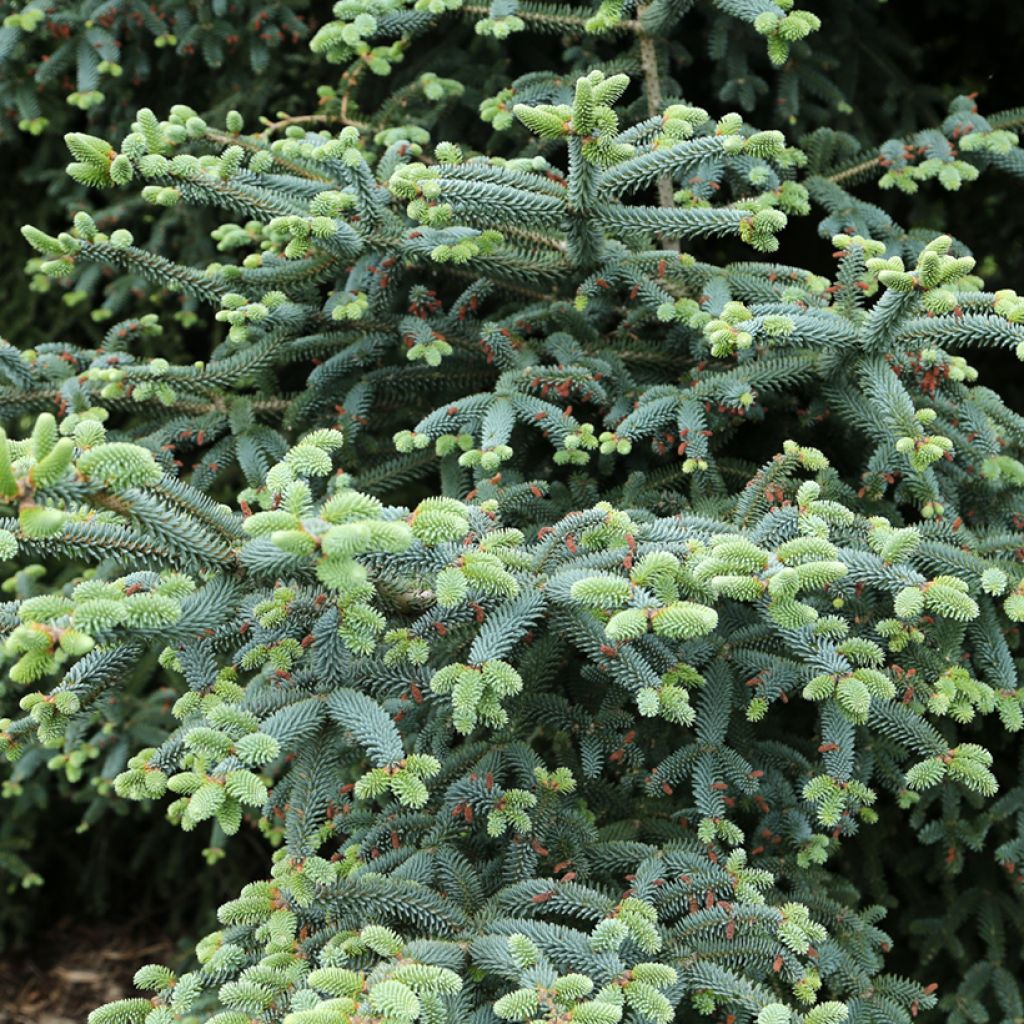

Abies pinsapo Glauca - Glaucous Spanish fir - Spanish fir 'Glauca'
Abies pinsapo Glauca - Glaucous Spanish fir - Spanish fir 'Glauca'
Abies pinsapo Glauca
Sapin d'Espagne Glauca, Sapin d'Andalousie, Sapin de Ronda, Pin savon, Sapin hérisson, Sapin des piliers d'Hercule
Why not try an alternative variety in stock?
View all →This plant carries a 24 months recovery warranty
More information
We guarantee the quality of our plants for a full growing cycle, and will replace at our expense any plant that fails to recover under normal climatic and planting conditions.
From €7.90 for pickup delivery and €6.90 for home delivery
Express home delivery from €8.90.
Does this plant fit my garden?
Set up your Plantfit profile →
Description
The Abies pinsapo 'Glauca' is a stunning blue-foliaged form of the Spanish or Andalusian fir. This large conifer is prized for its unique habit, forming an irregular pyramid in mature specimens, and its rigid, plastic-like blue-grey needles arranged in a brush-like fashion around the branches. Slow-growing yet hardy and drought-resistant, it is also a majestic tree that can be planted as a standalone feature in the borders of a sufficiently spacious garden. This beautiful, quintessentially Mediterranean eye-catcher will thrive in any well-drained, even poor, acidic to chalky soil.
The Spanish fir, sometimes also called the Andalusian fir, is a conifer from the Pinaceae family, native to the mid and high mountains of Andalusia and Morocco. This species grows in dry, warm soils but can also withstand cold temperatures down to -25°C. With a habit that is initially cylindrical, the tree becomes tabular with age, often forming multiple leading shoots. It can reach up to 25 metres in height. The Abies pinsapo was introduced to France for its ornamental value in 1939. 'Glauca' is a horticultural selection by Desfossé & Thuillier, obtained in Orléans (France) before 1867. The blue Spanish fir 'Glauca' differs from the type species mainly in the blue-grey colour of its needles. Its growth remains slow throughout its life, unlike other firs, and it stays medium-sized, rarely exceeding 25 metres. Its almost cylindrical needles, arranged in a bottlebrush fashion and covered in a thick layer of wax, measure 1 to 2 cm in length. Marked with two white bands on both sides, they are truncate at the tip and very pleasant to the touch. The bark of the trunk becomes fissured with age. The 1 cm male cones form highly decorative clusters at the ends of lower branches, while the pinkish-white, slightly curved female cones, measuring up to 10 to 15 cm long, stand proudly upright at the top of the tree. They turn brown at ripeness and often only appear after 20 years, except in grafted specimens.
Abies pinsapo 'Glauca' is a large conifer, so its future development should be considered at the time of purchase. This tree has a straight trunk that can be pruned to improve access and very densely packed branches. Its drought resistance makes it ideal for Mediterranean gardens without irrigation, but this 'Glauca' variety also adapts easily to other climates. Plant it as a standalone specimen, surrounded by lower-growing plants. Consider pairing it with creeping conifers like the Juniperus procumbens 'Nana' or the golden creeping juniper Juniperus horizontalis 'Golden Carpet'.
Plant habit
Foliage
Botanical data
Abies
pinsapo
Glauca
Pinaceae
Sapin d'Espagne Glauca, Sapin d'Andalousie, Sapin de Ronda, Pin savon, Sapin hérisson, Sapin des piliers d'Hercule
Mediterranean
Other Abies
View all →Planting and care
Abies pinsapo 'Glauca' is best planted in autumn if summers are hot and dry, in a deep soil that retains some moisture, rich in humus, slightly acidic, neutral or chalky. It tolerates poor and chalky soils. This conifer thrives in full sun or partial shade. Water young plants regularly during the months following planting and hoe the soil in summer. The Spanish fir tolerates drought well once established, it is a fairly adaptable and hardy species, but its bark may split under intense frost. However, it is not very suited to regions that are too cold and damp.
Planting period
Intended location
Care
Planting & care advice
This item has not been reviewed yet - be the first to leave a review about it.
Similar products
Haven't found what you were looking for?
Hardiness is the lowest winter temperature a plant can endure without suffering serious damage or even dying. However, hardiness is affected by location (a sheltered area, such as a patio), protection (winter cover) and soil type (hardiness is improved by well-drained soil).

Photo Sharing Terms & Conditions
In order to encourage gardeners to interact and share their experiences, Promesse de fleurs offers various media enabling content to be uploaded onto its Site - in particular via the ‘Photo sharing’ module.
The User agrees to refrain from:
- Posting any content that is illegal, prejudicial, insulting, racist, inciteful to hatred, revisionist, contrary to public decency, that infringes on privacy or on the privacy rights of third parties, in particular the publicity rights of persons and goods, intellectual property rights, or the right to privacy.
- Submitting content on behalf of a third party;
- Impersonate the identity of a third party and/or publish any personal information about a third party;
In general, the User undertakes to refrain from any unethical behaviour.
All Content (in particular text, comments, files, images, photos, videos, creative works, etc.), which may be subject to property or intellectual property rights, image or other private rights, shall remain the property of the User, subject to the limited rights granted by the terms of the licence granted by Promesse de fleurs as stated below. Users are at liberty to publish or not to publish such Content on the Site, notably via the ‘Photo Sharing’ facility, and accept that this Content shall be made public and freely accessible, notably on the Internet.
Users further acknowledge, undertake to have ,and guarantee that they hold all necessary rights and permissions to publish such material on the Site, in particular with regard to the legislation in force pertaining to any privacy, property, intellectual property, image, or contractual rights, or rights of any other nature. By publishing such Content on the Site, Users acknowledge accepting full liability as publishers of the Content within the meaning of the law, and grant Promesse de fleurs, free of charge, an inclusive, worldwide licence for the said Content for the entire duration of its publication, including all reproduction, representation, up/downloading, displaying, performing, transmission, and storage rights.
Users also grant permission for their name to be linked to the Content and accept that this link may not always be made available.
By engaging in posting material, Users consent to their Content becoming automatically accessible on the Internet, in particular on other sites and/or blogs and/or web pages of the Promesse de fleurs site, including in particular social pages and the Promesse de fleurs catalogue.
Users may secure the removal of entrusted content free of charge by issuing a simple request via our contact form.
The flowering period indicated on our website applies to countries and regions located in USDA zone 8 (France, the United Kingdom, Ireland, the Netherlands, etc.)
It will vary according to where you live:
- In zones 9 to 10 (Italy, Spain, Greece, etc.), flowering will occur about 2 to 4 weeks earlier.
- In zones 6 to 7 (Germany, Poland, Slovenia, and lower mountainous regions), flowering will be delayed by 2 to 3 weeks.
- In zone 5 (Central Europe, Scandinavia), blooming will be delayed by 3 to 5 weeks.
In temperate climates, pruning of spring-flowering shrubs (forsythia, spireas, etc.) should be done just after flowering.
Pruning of summer-flowering shrubs (Indian Lilac, Perovskia, etc.) can be done in winter or spring.
In cold regions as well as with frost-sensitive plants, avoid pruning too early when severe frosts may still occur.
The planting period indicated on our website applies to countries and regions located in USDA zone 8 (France, United Kingdom, Ireland, Netherlands).
It will vary according to where you live:
- In Mediterranean zones (Marseille, Madrid, Milan, etc.), autumn and winter are the best planting periods.
- In continental zones (Strasbourg, Munich, Vienna, etc.), delay planting by 2 to 3 weeks in spring and bring it forward by 2 to 4 weeks in autumn.
- In mountainous regions (the Alps, Pyrenees, Carpathians, etc.), it is best to plant in late spring (May-June) or late summer (August-September).
The harvesting period indicated on our website applies to countries and regions in USDA zone 8 (France, England, Ireland, the Netherlands).
In colder areas (Scandinavia, Poland, Austria...) fruit and vegetable harvests are likely to be delayed by 3-4 weeks.
In warmer areas (Italy, Spain, Greece, etc.), harvesting will probably take place earlier, depending on weather conditions.
The sowing periods indicated on our website apply to countries and regions within USDA Zone 8 (France, UK, Ireland, Netherlands).
In colder areas (Scandinavia, Poland, Austria...), delay any outdoor sowing by 3-4 weeks, or sow under glass.
In warmer climes (Italy, Spain, Greece, etc.), bring outdoor sowing forward by a few weeks.



































